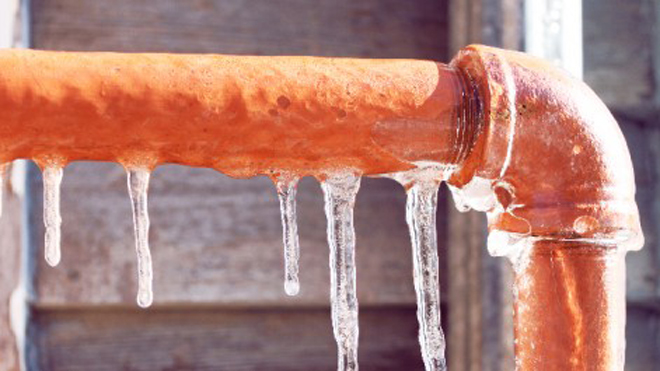Guidance for Avoiding Frozen Plumbing in Winter: Expert Tips
Guidance for Avoiding Frozen Plumbing in Winter: Expert Tips
Blog Article
What're your thoughts concerning Preventing and dealing with frozen pipes?

Cold weather can ruin your plumbing, particularly by freezing pipelines. Here's just how to prevent it from taking place and what to do if it does.
Introduction
As temperature levels decline, the danger of icy pipes boosts, potentially causing pricey repair work and water damages. Understanding exactly how to prevent icy pipelines is important for home owners in chilly climates.
Prevention Tips
Protecting vulnerable pipes
Cover pipelines in insulation sleeves or utilize heat tape to safeguard them from freezing temperature levels. Focus on pipelines in unheated or external areas of the home.
Home heating techniques
Keep indoor rooms sufficiently warmed, specifically areas with plumbing. Open cupboard doors to permit cozy air to circulate around pipes under sinks.
Exactly how to determine icy pipelines
Seek lowered water circulation from faucets, unusual smells or sounds from pipelines, and visible frost on exposed pipelines.
Long-Term Solutions
Architectural modifications
Think about rerouting pipes far from outside wall surfaces or unheated locations. Add added insulation to attic rooms, basements, and crawl spaces.
Updating insulation
Purchase premium insulation for pipelines, attic rooms, and walls. Correct insulation assists preserve regular temperature levels and reduces the danger of frozen pipes.
Shielding Outside Pipes
Garden pipes and outdoor faucets
Separate and drain pipes garden hose pipes prior to winter. Set up frost-proof faucets or cover outdoor faucets with protected caps.
Recognizing Frozen Pipes
What triggers pipelines to ice up?
Pipelines ice up when exposed to temperatures listed below 32 ° F (0 ° C) for extended periods. As water inside the pipes freezes, it increases, taxing the pipeline walls and possibly triggering them to burst.
Threats and damages
Icy pipelines can lead to water supply disruptions, property damages, and pricey repair work. Burst pipes can flooding homes and create considerable architectural damage.
Indications of Frozen Piping
Recognizing frozen pipes early can stop them from bursting.
What to Do If Your Pipes Freeze
Immediate actions to take
If you believe frozen pipes, maintain faucets open up to eliminate pressure as the ice melts. Make use of a hairdryer or towels taken in warm water to thaw pipes slowly.
Conclusion
Stopping icy pipes calls for proactive procedures and fast responses. By understanding the reasons, indicators, and safety nets, home owners can secure their plumbing throughout cold weather.
Helpful Tips to Prevent Frozen Pipes this Winter
UNDERSTANDING THE BASICS: WHY PIPES FREEZE AND WHY IT’S A PROBLEM
Water freezing inside pipes is common during the winter months, but understanding why pipes freeze, and the potential problems it can cause is crucial in preventing such incidents. This section will delve into the basics of why pipes freeze and the associated problems that may arise.
THE SCIENCE BEHIND FROZEN PIPES
When water reaches freezing temperatures, it undergoes a physical transformation and solidifies into ice. This expansion of water as it freezes is the primary reason pipes can burst. As the water inside the pipe freezes, it expands, creating immense pressure on the walls. If the pressure becomes too great, the pipe can crack or rupture, leading to leaks and water damage.
FACTORS THAT CONTRIBUTE TO PIPE FREEZING
Low Temperatures: Extremely cold weather, especially below freezing, increases the risk of pipes freezing. Uninsulated or Poorly Insulated Pipes: Pipes located in unheated areas, such as basements, crawl spaces, or attics, are more prone to freezing. Insufficient insulation or lack of insulation altogether exacerbates the problem. Exterior Wall Exposure: Pipes running along exterior walls are susceptible to freezing as they encounter colder temperatures outside. Lack of Heating or Temperature Regulation: Inadequate heating or inconsistent temperature control in your home can contribute to frozen pipes. PROBLEMS CAUSED BY FROZEN PIPES
- Pipe Bursting: As mentioned earlier, the expansion of water as it freezes can cause pipes to burst, resulting in significant water damage.
- Water Damage: When pipes burst, it can lead to flooding and water damage to your property, including walls, ceilings, flooring, and personal belongings.
- Structural Damage: Prolonged exposure to water from burst pipes can compromise the structural integrity of your home, leading to costly repairs.
- Mold and Mildew Growth: Excess moisture from water damage can create a favorable environment for mold and mildew growth, posing health risks to occupants.
- Disrupted Water Supply: Frozen pipes can also result in a complete or partial loss of water supply until the issue is resolved.
WHY CERTAIN PIPES ARE MORE PRONE TO FREEZING
- Location: Pipes located in unheated or poorly insulated areas, such as basements, crawl spaces, attics, or exterior walls, are at higher risk of freezing.
- Exterior Pipes: Outdoor pipes, such as those used for irrigation or exposed plumbing, are particularly vulnerable to freezing as they are directly exposed to the elements.
- Supply Lines: Pipes that carry water from the main water supply into your home, including the main water line, are critical to protect as freezing in these lines can affect your entire plumbing system.
- Underground Pipes: Pipes buried underground, such as those connected to sprinkler systems or outdoor faucets, can be susceptible to freezing if not properly insulated.
https://busybusy.com/blog/helpful-tips-to-prevent-frozen-pipes-this-winter/
:strip_icc()/snow-outdoor-faucet-pipes-4af65d1e5e904fb1aa7bf74071fe5d89.jpg)
We had been made aware of that editorial on Helpful Tips to Prevent Frozen Pipes this Winter through a buddy on a different website. For those who enjoyed our article if you please make sure you remember to share it. I praise you for your time. Return soon.
Call Today Report this page